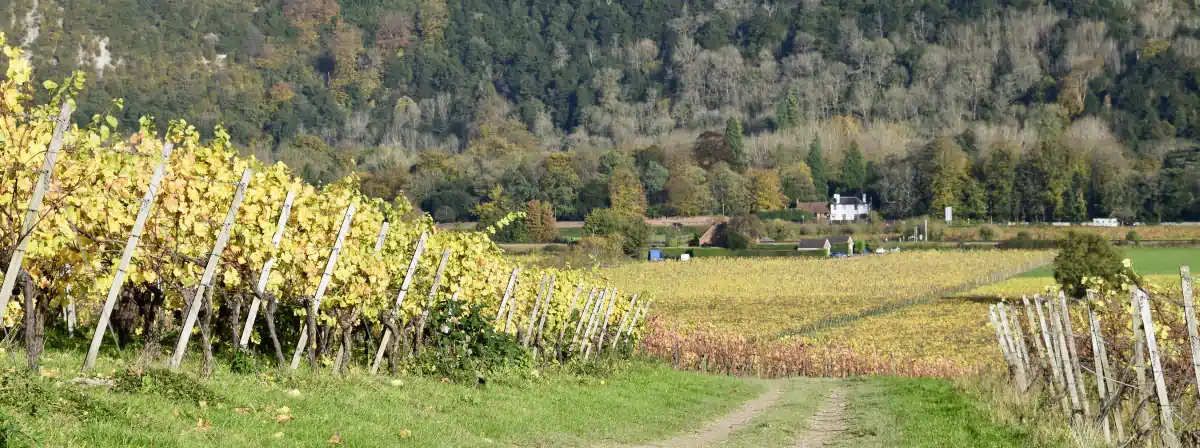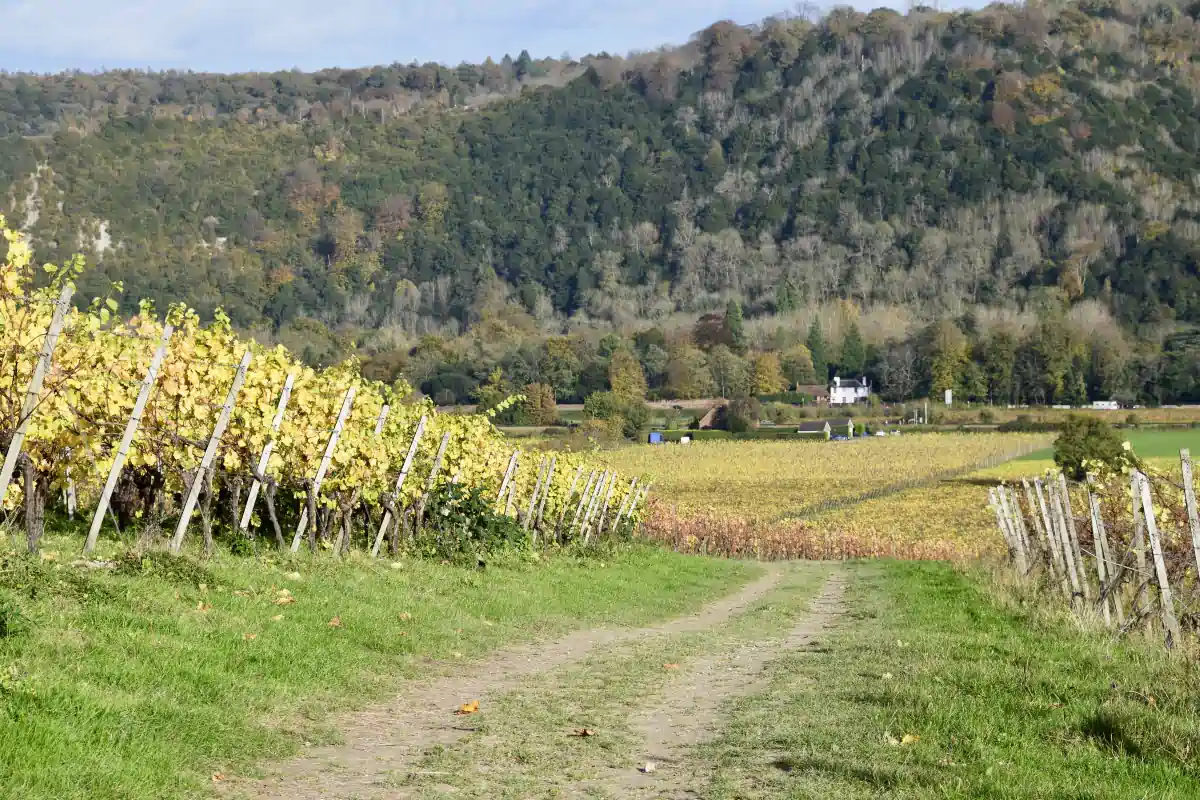
Wine and wine-making in England
Over 3m bottles of wine are produced by over 500 wineries in England each year, with English wine growing in popularity, quality and quantity. Most vineyards are in the southern counties of Hampshire, Surrey, Sussex and Kent and there are over 2,023 hectares (5,000 acres) planted nationwide (Source: WineGB). Many are open to the public to visit. England's largest vineyard is Denbies Wine Estate in the North Downs of Surrey near Dorking with 107 hectares (265 acres) planted. The most popular grape varieties grown in English vineyards are Chardonnay, Pinot Noir, Bacchus, Pinot Meunier and Ortega.
Grapes were first cultivated for wine in England by the Romans during their 1st to 4th Century occupation of the country. While wine-making at low volumes continued through the centuries, it was all but ended by the First World War, when all arable land was required for food. Wine making in England grew in popularity properly from the 1970's and 80's. Prominent English vineyards Bolney, Denbies and Nyetimber, were all established in the 1980's, with Queen Elizabeth II making a visit to Denbies in 1986.
In 2015, Champagne Taittinger announced the acquisition of a 69 hectare (170 acres) former orchard in Kent with the intention to start production of an English sparkling wine. Pierre-Emmanuel Taittinger, CEO at the time, was quoted as saying "We believe we can produce a high quality English sparkling wine, drawing on our 80 years of wine-making expertise". The 2018 harvest was described by British wine trade body, WineGB, as "the harvest of the century".
English sparkling wine is consistently praised for its quality. In 2020 two English wines were awarded the top accolade of Best in Show (Roebuck Estate and Simpsons) at the 2020 Decanter World Wine Awards. Three platinum and five gold medals were also awarded to English wines.
